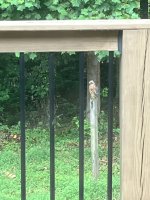Michael P
Omono
We have similar irrigation restrictions here. Some cities in Texas have reasonable gray water regulations, but not Dallas. Here we are even required to put AC condensate in the sanitary sewer despite the fact that condensate is pretty close to distilled water. It drives me nuts!
Back on topic, I've used Milorganite in landscapes, general potted plants, and bonsai for about 20 years. It gives a very safe baseline of fertility in all cases. Our native soils have plenty of potassium, so no problem in landscapes or vegetable gardens. For potted plants and bonsai I usually fertilize biweekly with MiracleGro in addition to Milorganite.
I can't comment on it's deer repellent qualities, but nothing stops squirrels except death.
Back on topic, I've used Milorganite in landscapes, general potted plants, and bonsai for about 20 years. It gives a very safe baseline of fertility in all cases. Our native soils have plenty of potassium, so no problem in landscapes or vegetable gardens. For potted plants and bonsai I usually fertilize biweekly with MiracleGro in addition to Milorganite.
I can't comment on it's deer repellent qualities, but nothing stops squirrels except death.



